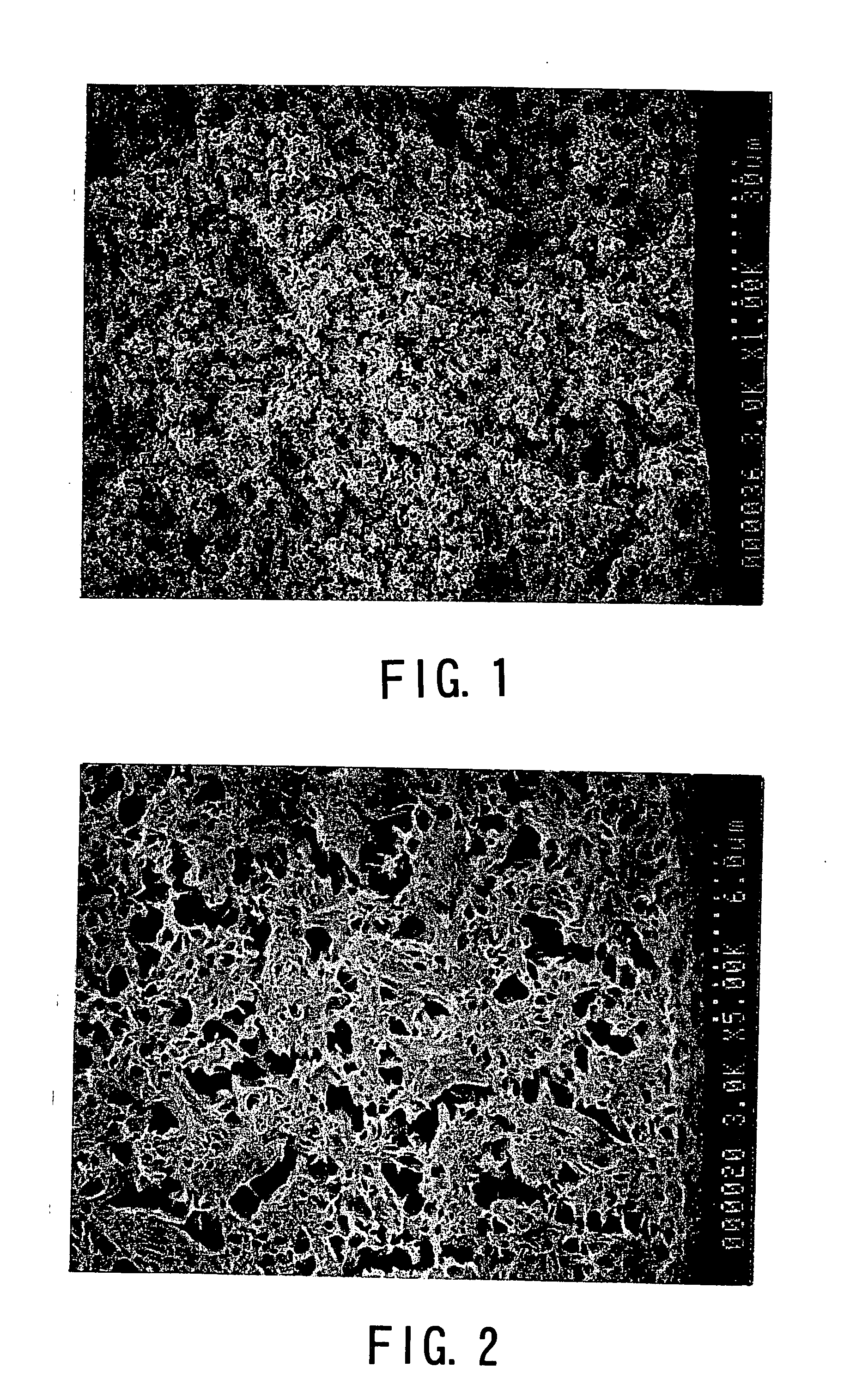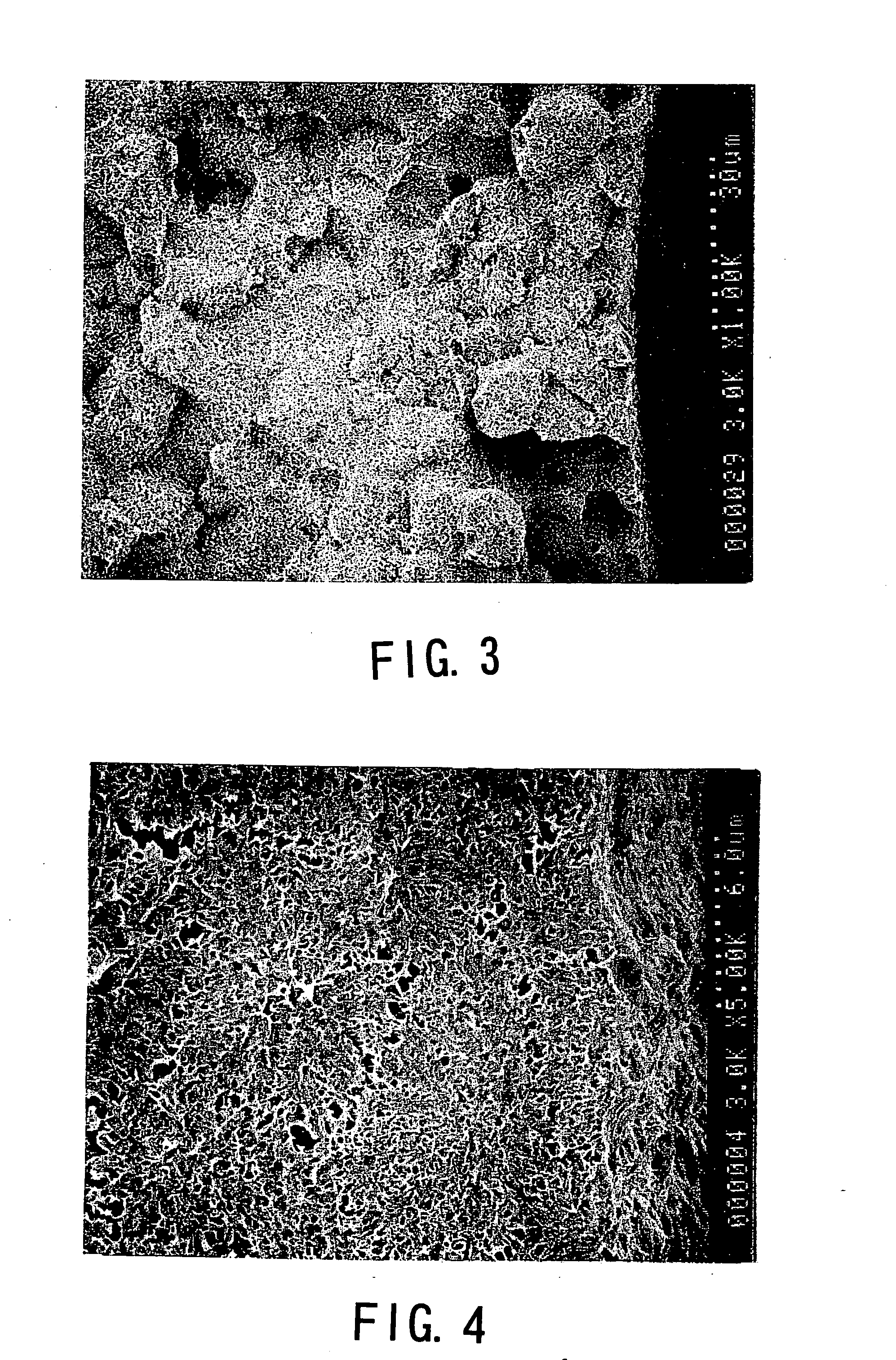Porous Water Filtration Membrane of Vinylidene Fluoride Resin Hollow Fiber and Process for Production Thereof
a technology of vinylidene fluoride and water filtration membrane, which is applied in the field of porous water filtration membrane of vinylidene fluoride resin hollow fiber, can solve the problems of not having desirable formability, chemical resistance to ozone treatment, back washing, etc., and achieves improved water permeation rate, mechanical strength and stretchability can be improved, and the effect of suppressing the formation of spherulite textur
- Summary
- Abstract
- Description
- Claims
- Application Information
AI Technical Summary
Benefits of technology
Problems solved by technology
Method used
Image
Examples
example 1
[0089] A principal polyvinylidene fluoride (PVDF) (powder) having a weight-average molecular weight (Mw) of 2.52×105 and a crystallinity-modifier polyvinylidene fluoride (PVDF) (powder) having Mw=6.59×105 were blended in proportions of 87.5 wt. % and 12.5 wt. %, respectively, by a Henschel mixer to obtain a mixture A having Mw=3.03×105.
[0090] An adipic acid-based polyester plasticizer (“PN-150”, made by Asahi Denka Kogyo K.K.) as an aliphatic polyester and N-methylpyrrolidone (NMP) as a solvent were mixed under stirring in a ratio of 87.5 wt. % / 12.5 wt. % at room temperature to obtain a mixture B.
[0091] An equi-directional rotation and engagement-type twin-screw extruder (“BT-30”, made by Plastic Kogaku Kenkyusyo K.K.; screw diameter: 30 mm, L / D=48) was used, and the mixture A was supplied from a powder supply port at a position of 80 mm from the upstream end of the cylinder and the mixture B heated to 100° C. was supplied from a liquid supply port at a position of 480 mm from the...
example 2
[0097] The porous hollow fiber obtained in Example 1 was fixed so as not shrink in the longitudinal direction and, while being kept in this state, was immersed in ethanol for 15 min. and then in pure water for 15 min. to be hydrophilized, followed by immersion in 20%-caustic soda aqueous solution (pH14) maintained at 70° C. for 1 hour, washing with water and 1 hour of drying in a warm air oven maintained at 60° C.
example 3
[0098] A porous hollow fiber was obtained in the same manner as in Example 1 except for changing the temperature of the cooling water bath for cooling the melt-extruded mixture to 11° C. and the stretching ratio to 1.8 times.
PUM
| Property | Measurement | Unit |
|---|---|---|
| Tm2-Tc | aaaaa | aaaaa |
| Tm2-Tc | aaaaa | aaaaa |
| crystallization temperature Tc | aaaaa | aaaaa |
Abstract
Description
Claims
Application Information
 Login to View More
Login to View More - R&D
- Intellectual Property
- Life Sciences
- Materials
- Tech Scout
- Unparalleled Data Quality
- Higher Quality Content
- 60% Fewer Hallucinations
Browse by: Latest US Patents, China's latest patents, Technical Efficacy Thesaurus, Application Domain, Technology Topic, Popular Technical Reports.
© 2025 PatSnap. All rights reserved.Legal|Privacy policy|Modern Slavery Act Transparency Statement|Sitemap|About US| Contact US: help@patsnap.com



